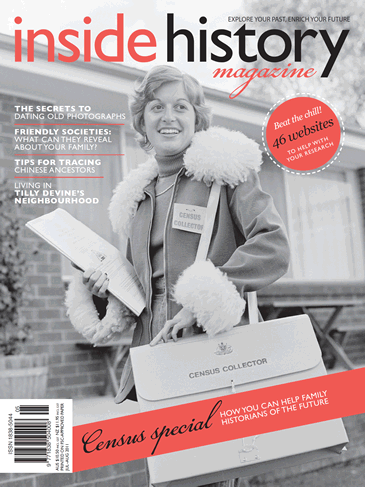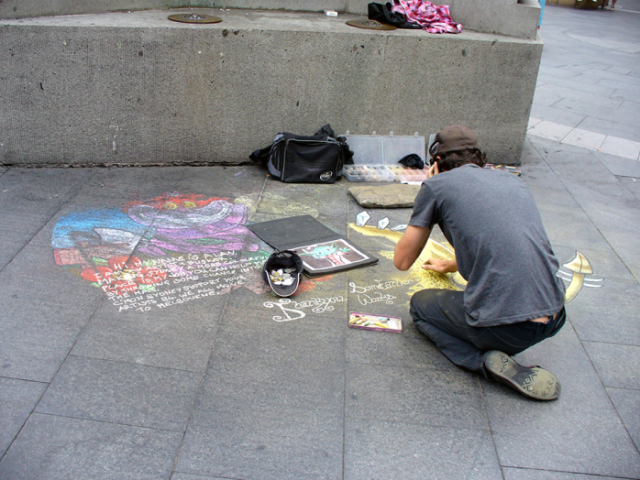 We’re thrilled to see the new issue of Inside History, just out, which includes an article from the Dictionary of Sydney.
We’re thrilled to see the new issue of Inside History, just out, which includes an article from the Dictionary of Sydney.
‘The decorated footpath‘ by Megan Hicks has been in the Dictionary for some time, focussing on the ground beneath our feet. Footpaths were really important in the early colony, when so many more people walked everywhere, and shoes and boots were expensive and hard to come by. And as they are today, paved footpaths quickly became sites for advertising, ornamentation and city beautification. Whether it was the evangelism of Mr Eternity, Arthur Stace, advertisements for boots or beer, or the chalk art of screevers, footpaths provided a canvas for communication.
This month’s Inside History also includes an article by another of our authors, Mark St Leon, whose work on circus history is so well known. His article in the Dictionary covers Sydney’s part in this colourful story, and his new book takes a wider view.
Inside History’s cover story is an interesting piece about the upcoming 2011 Census, and its usefulness to future historians. We can see this clearly in the Dictionary of Sydney’s material from the last three Censuses, organised by suburb.
Click on the Demographics link in the middle of any suburb page to see a huge range of information about the changing populations of over 600 suburbs. We’ll be adding the figures from the 2011 Census as soon as they are available, making it four sets of data. Already, you can see trends and changes in many suburbs. An example is Eastwood, which in 1996 had 3.2% of its population born in China, and 5.7 % born in Hong Kong. In 2006, 14% of Eastwood residents were born in China, and 6% in Hong Kong, with a sizeable population of 5.7 % of Koreans arriving during the decade. As our article on Eastwood describes, this increase in diversity has brought a new phase in Eastwood’s cultural and commercial development.
In other countries, notably Ireland, historic census material is available online and provides a fascinating snapshot of life as well as a boon for family historians. Inside History makes the interesting suggestion that you copy and file your Census return, so that your descendants can see it long before the 99-year release. I had never thought of that, but I’ll certainly do it this year.

The Burning of the Garden Palace, seen from the North Shore c1882, by John Hoyte, SLNSW a1528042 / V1/Har/1880-1889/7 The 1881 census returns for NSW were among the many government records that went up in flames when the Garden Palace was destroyed by fire in 1882. The results of the census had already been delayed and the loss of the records would provoke "no doubt a feeling of the utmost indignation" (SMH 23 September 1882, p7 http://nla.gov.au/nla.news-article28377233)
We’ll be working with Inside History over the next 12 months to bring some of our content to their readers, as well as our online audience. Decorating the footpath is just the beginning!




You do forget in this day and age that people were walking everywhere and that advertising was on display on the footpath and not up on top of buildings on big billboards. Funny to think that footpaths were the original social media.